Introduction
Autism Spectrum Disorder (ASD) represents a complex neurodevelopmental condition that affects social interaction, communication, and behavior. Recognizing the unique experiences of each individual with ASD is crucial for parents and caregivers, as it lays the foundation for effective support strategies. Recent advancements in research, such as the use of AI and machine learning, are paving the way for more personalized and preventive approaches, enhancing the quality of life for those with ASD.
Additionally, integrated care addressing mental health concerns is essential for comprehensive support. Understanding the genetic components of autism, including specific variations and heritability estimates, further emphasizes the importance of family history in assessing risk. Alongside genetics, environmental factors play a significant role, highlighting the need for a holistic view of autism that considers both genetic and environmental influences.
Genetic testing can provide valuable insights for early intervention, enabling families to access tailored support strategies that significantly improve developmental outcomes.
Understanding Autism Spectrum Disorder (ASD)
Autism Spectrum Disorder (ASD) is a multifaceted neurodevelopmental condition, presenting challenges in social interaction, communication, and repetitive behaviors. Every person's experience is unique, with differing symptoms and intensity. Understanding ASD is essential for parents and caregivers as it forms the basis for effective interventions and resources. As stated by the Interagency Autism Coordinating Committee (IACC), a federal advisory organization, promoting autism research and services requires cooperation among federal agencies, autistic persons, families, and other stakeholders. Insights from recent studies, such as those carried out by The Center for Discovery, emphasize the potential of using AI and machine learning to predict and mitigate significant behaviors in people with ASD. This can lead to more personalized and preventive approaches, ultimately improving the quality of life for those affected. Furthermore, tackling mental health issues, which are more common among those on the autism spectrum, necessitates coordinated care strategies to evaluate and manage conditions like anxiety and depression, guaranteeing thorough support for the well-being of people with neurodevelopmental disorders.
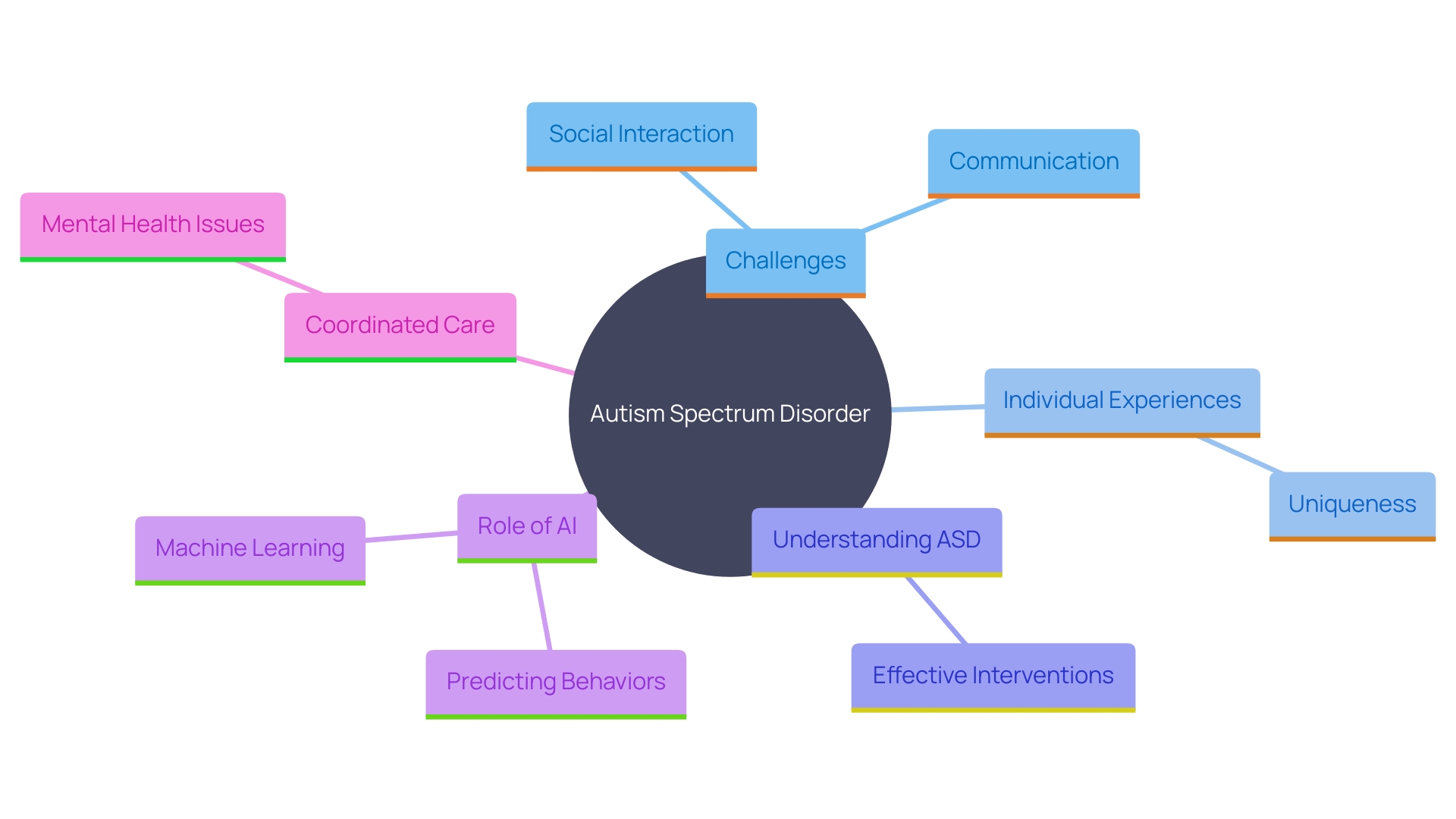
The Role of Genetics in Autism
Genetics is a crucial factor in the development of autism. Recent studies have indicated that particular hereditary variations greatly influence a person's likelihood of developing ASD. For instance, the identification of tandem repeats within certain genes, such as the AFF3 gene, has been linked to disruptions in cognitive abilities and educational attainment. As Andrew Sharp, PhD, Professor of Genetics and Genomic Sciences at Icahn Mount Sinai, explains, these hereditary anomalies can lead to a disruption in the biological instructions, which impacts a person's development. By employing advanced DNA methylation profiling and genotyping, researchers have identified genetic markers that not only improve our comprehension of the biological underpinnings of the condition but also facilitate more accurate genetic testing and diagnostics. This progress is essential for developing targeted interventions and therapies that can significantly improve the lives of individuals with ASD.
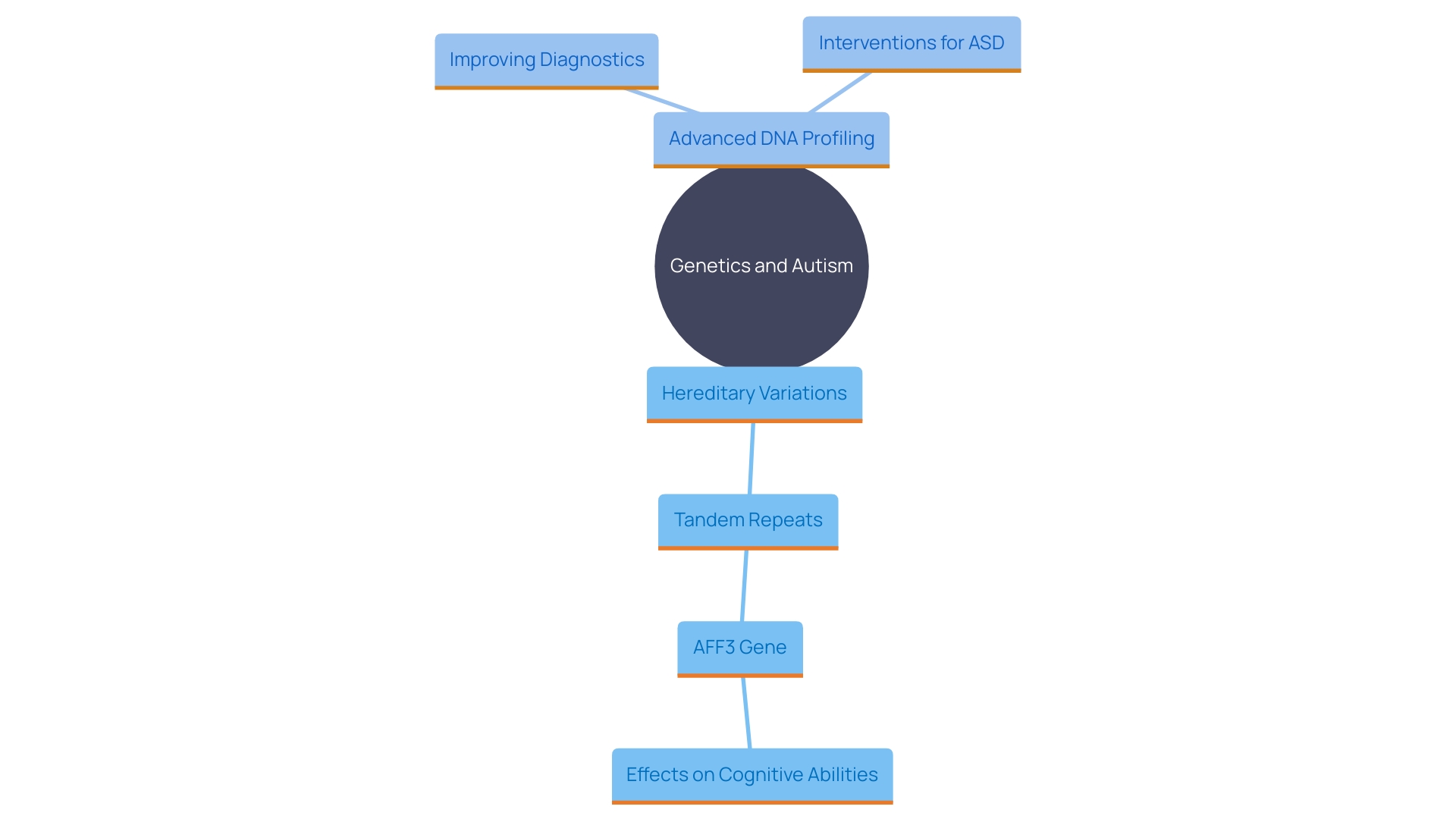
Types of Genetic Variations in Autism
Genetic variations contributing to the condition are multifaceted, including single nucleotide polymorphisms (SNPs), copy number variations (CNVs), and de novo mutations. Each type of variation influences brain development and function in unique ways. For instance, a study using RNA-sequencing data from multiple species revealed that common cortical neurons in humans have evolved rapidly, correlating with a reduction in certain autism-related genes due to natural selection. This highlights the intricacy of the hereditary framework related to developmental disorders and the continuous evolution of the human brain.
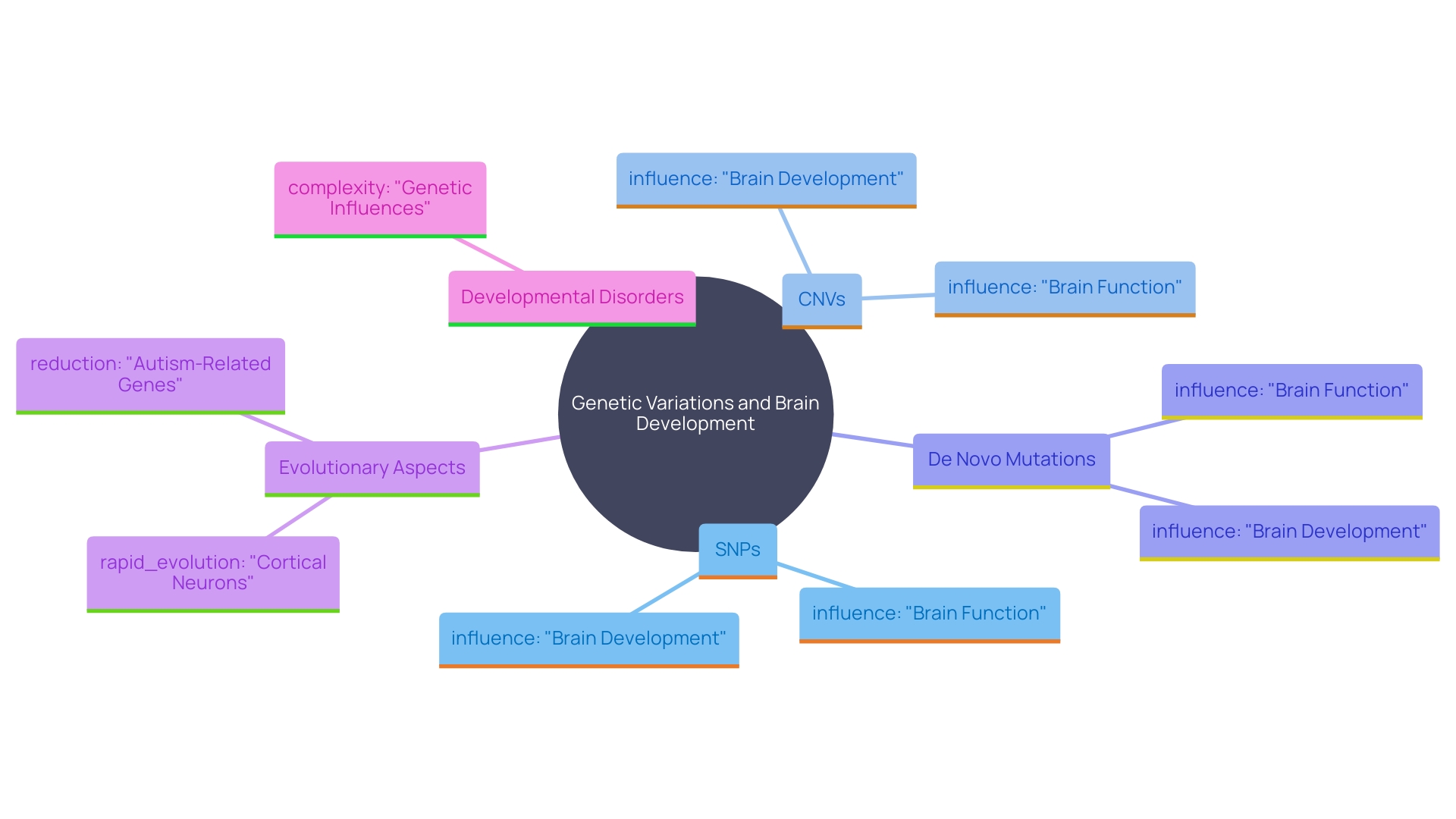
Heritability Estimates for Autism
Studies consistently demonstrate that this condition has a significant hereditary aspect, with heritability estimates varying from 50% to 90%. This high heritability emphasizes the significant role that hereditary factors play in the development of autism spectrum disorder (ASD). Grasping the hereditary foundations is crucial, as it highlights the importance of family history in assessing individual risk. For example, studies approved by the Danish Data Protection Agency have affirmed that hereditary variations significantly contribute to ASD, though the precise biological mechanisms remain complex and multifaceted. This complexity reflects challenges encountered in other inheritable conditions, such as Alzheimer's disease, where pinpointing specific hereditary causes is similarly intricate. The Centers for Disease Control and Prevention also note the prevalence of ASD, emphasizing the need for continued research into its hereditary basis to better support affected individuals and their families.
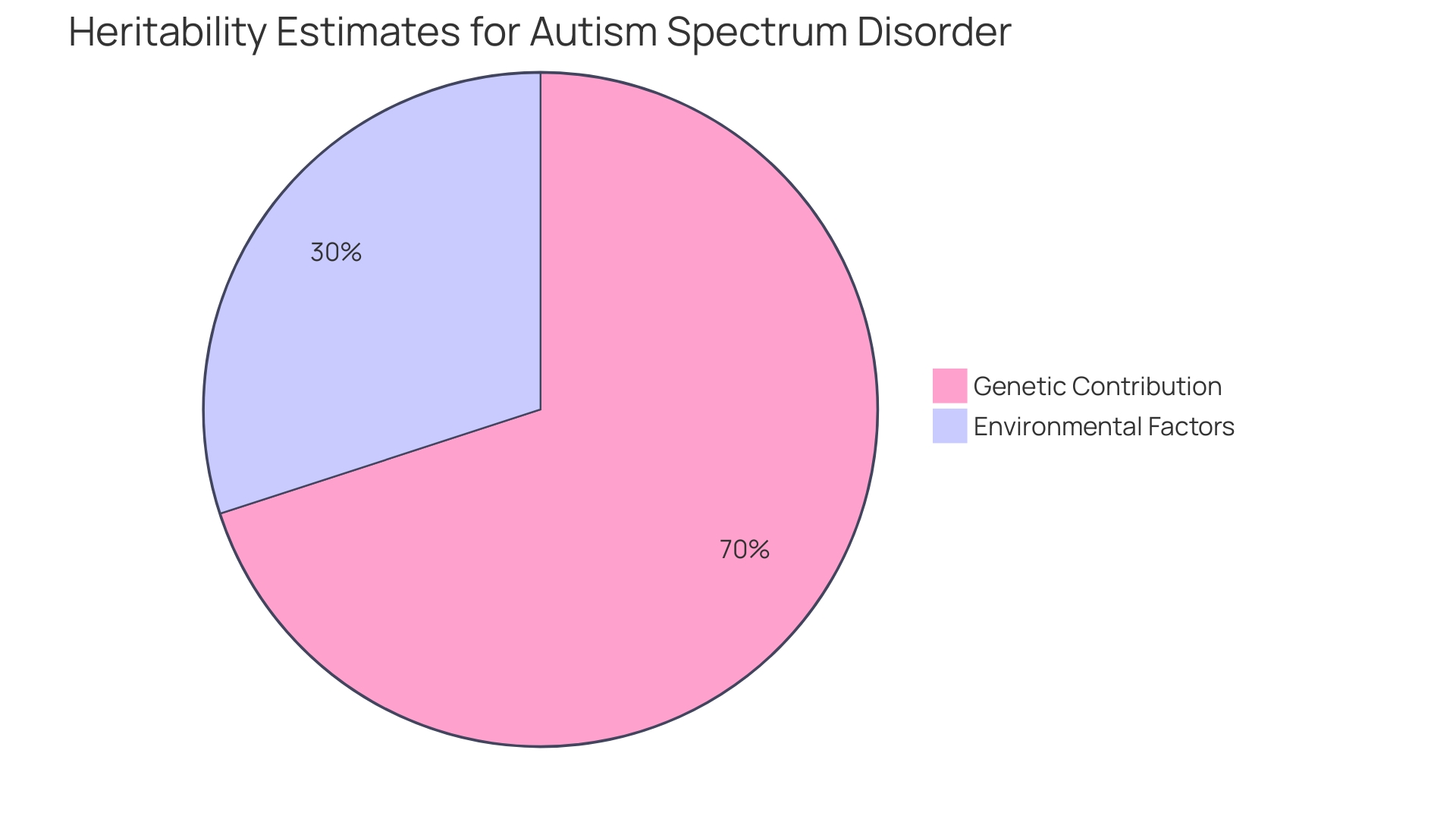
Environmental Factors and Autism Risk
While genetics play a critical role in autism, environmental elements are equally important in influencing autism risk. Prenatal exposures, maternal health, and early childhood experiences can interact with genetic predispositions, shaping the likelihood of developing Autism Spectrum Disorder (ASD). The complexity of these interactions is emphasized by the wide variety of environmental influences that can impact development. For instance, pathogen exposure in utero, trauma, air quality, poverty, and parental age all contribute to this intricate web. As one expert points out, “Technologies to understand environment haven’t been able to catch up. You can’t just take a blood sample and decide what all your exposures are.” This underscores the challenge of capturing the full spectrum of environmental influences, many of which are transient and difficult to quantify. Grasping these complex interactions is essential for a comprehensive perspective on the condition, allowing for more specific interventions and assistance for individuals with ASD.
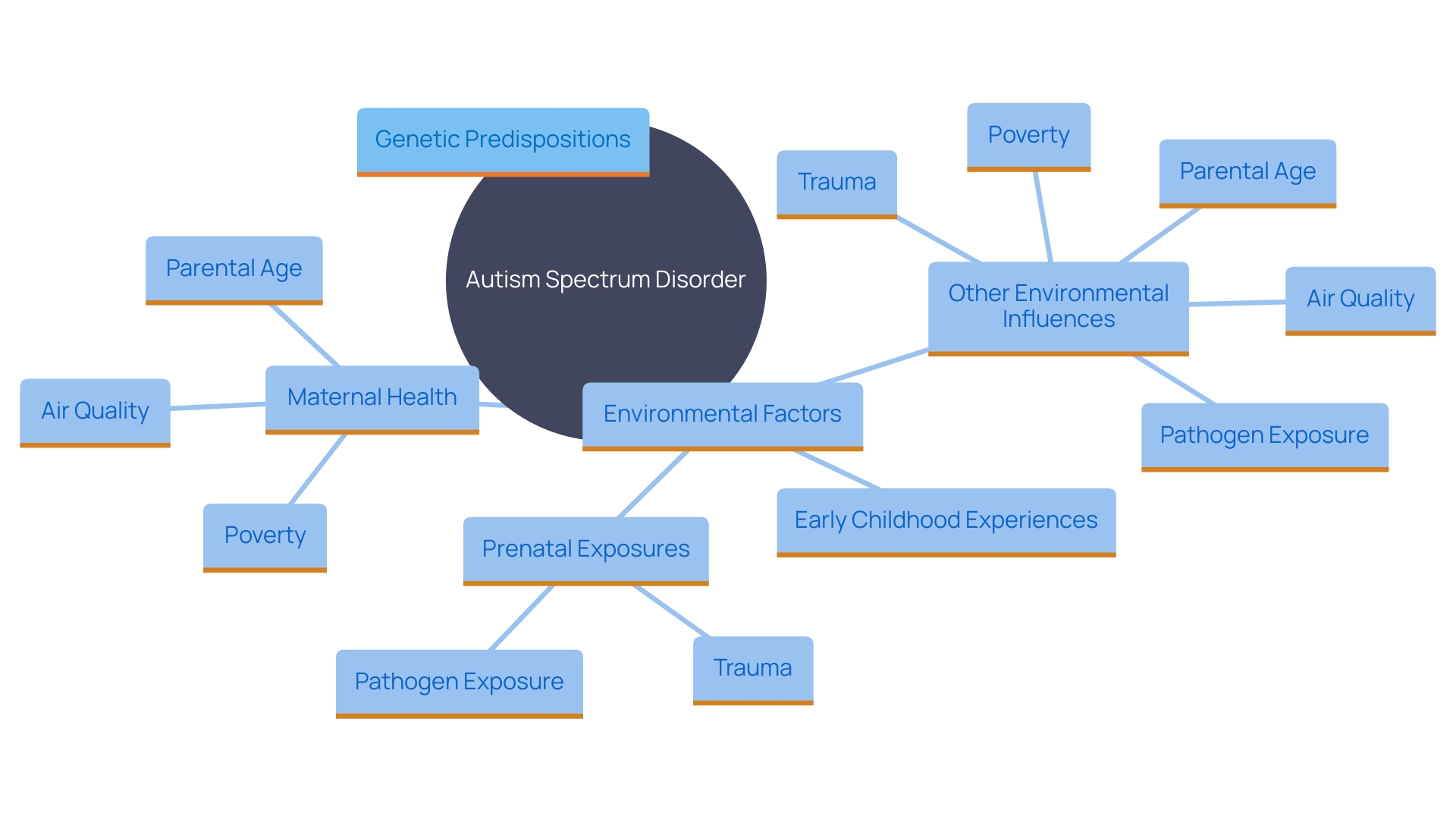
The Interplay Between Genetic and Environmental Factors
Grasping the connection between hereditary and environmental influences in developmental disorders is a complicated task. Studies show that specific genetic tendencies may increase sensitivity to environmental factors, such as toxins or stressors, possibly leading to developmental disorders. This dynamic interplay emphasizes the necessity of a comprehensive approach to research and intervention related to developmental disorders. As one expert notes, "Technologies to understand environment haven’t been able to catch up. You can’t just take a blood sample and decide what all your exposures are." The environment includes a broad range of elements, from prenatal pathogen exposure to air quality, poverty, and even a parent's age. Many of these exposures are transient and often go unnoticed or unremembered, making it challenging to capture their full impact. For instance, someone might remember growing up near a freeway with high air pollution levels but may not recall all the pesticides used on their lawn or the number of colds their mother had during pregnancy. This intricate dance between our genes and environment underscores the importance of a holistic understanding to better support people on the autism spectrum.
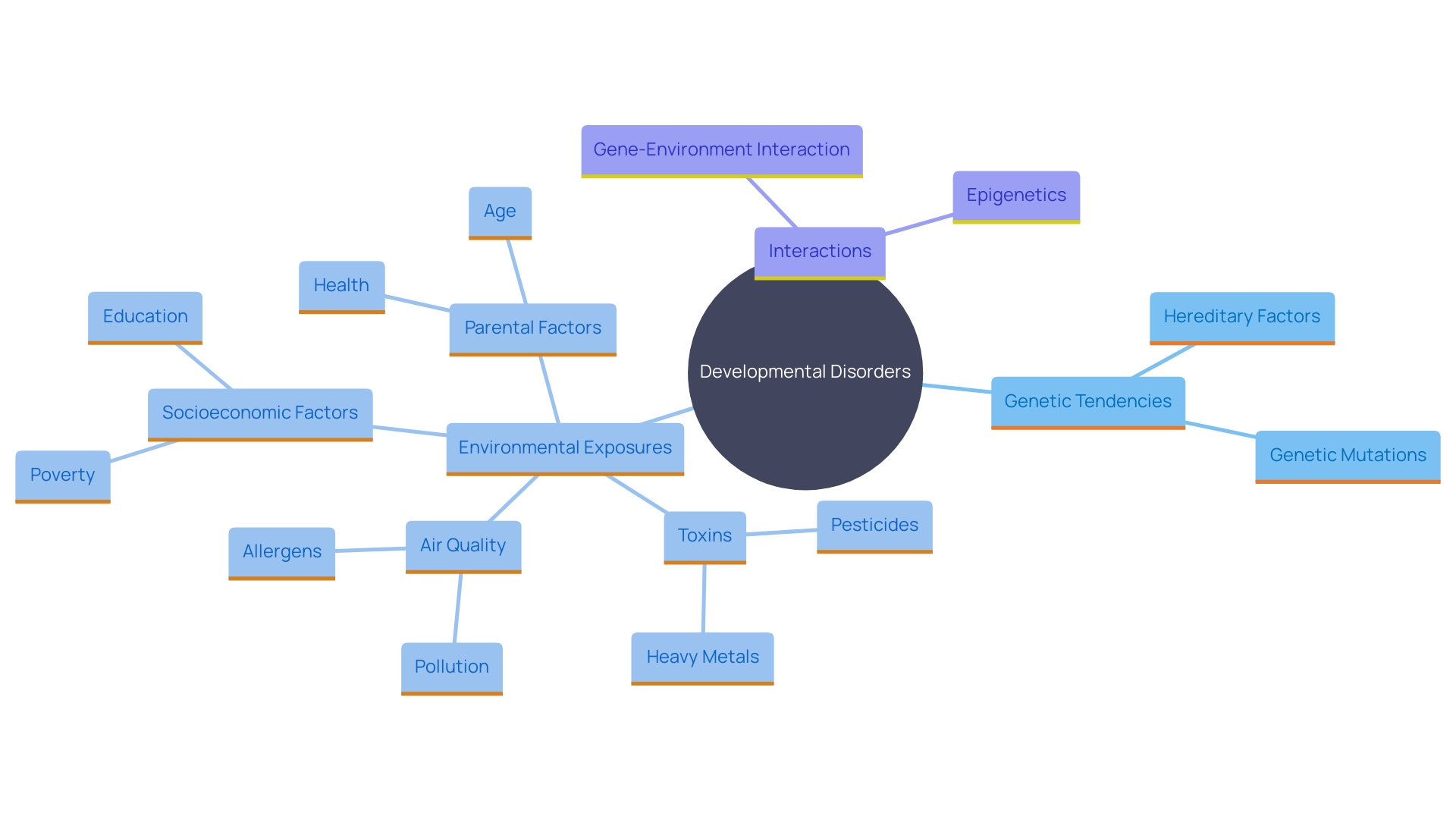
Genetic Testing and Personalized Interventions
DNA examination provides crucial understanding of the distinct hereditary elements that play a role in autism among individuals. By identifying these factors early, families can access personalized interventions and support strategies, significantly enhancing developmental outcomes. For instance, a case study revealed that a de novo microdeletion involving the PAPOLG and REL genes was linked to intellectual disability, underscoring the value of identifying specific hereditary changes.
Moreover, the work of the Interagency Autism Coordinating Committee (IACC) highlights the importance of early diagnosis and intervention. Research consistently shows that early treatment, such as behavioral therapy, can lead to better outcomes. NeuroQure’s recent advancements in diagnostic tools aim to shorten the diagnostic timeline, offering precise evaluations of developmental disorders within weeks of birth rather than years.
As Dr. Andrew Sharp from Icahn Mount Sinai points out, the discovery of specific genetic sequences, like the repeat expansion within the AFF3 gene, can greatly improve the precision of genetic testing for autism. These advancements empower parents with crucial information, enabling them to make informed decisions about their child's care and access timely, tailored support.
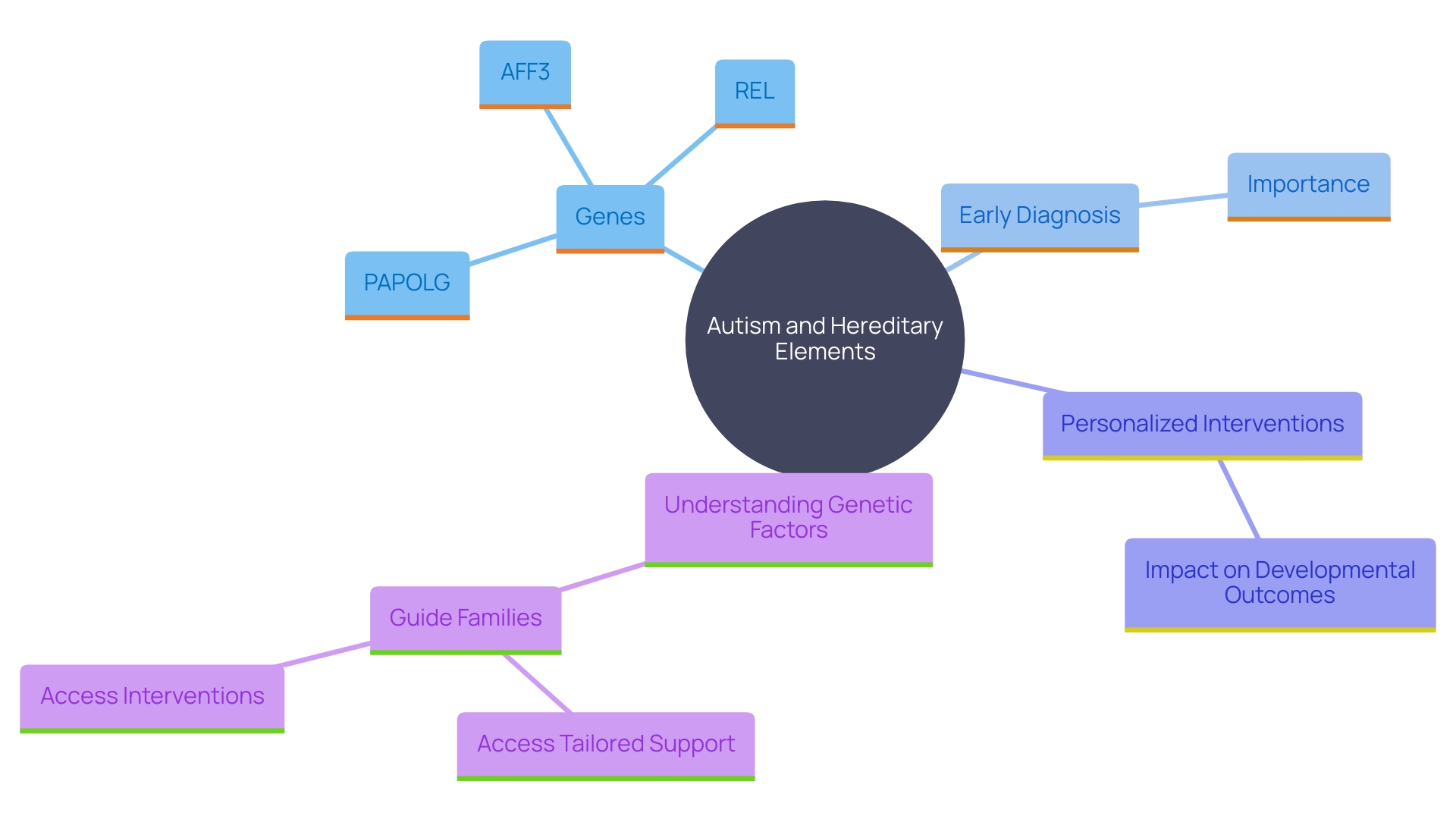
Conclusion
Understanding Autism Spectrum Disorder (ASD) requires a multifaceted approach that encompasses both genetic and environmental factors. Each individual's experience with autism is unique, and recognizing this diversity is essential for parents and caregivers as they seek effective interventions. Recent advancements in AI and machine learning offer promising avenues for personalized support, highlighting the importance of integrating mental health care to address the prevalent challenges faced by those with ASD.
Genetic research has unveiled significant insights into the heritability of autism, indicating that genetic variations contribute largely to its development. This understanding emphasizes the need for targeted genetic testing, which can pave the way for early diagnosis and tailored interventions. Additionally, the interplay between genetic predispositions and environmental influences complicates the landscape of autism, necessitating a holistic view that considers both aspects to better support individuals and their families.
The role of genetic testing in providing individualized strategies cannot be overstated. By identifying specific genetic markers, families can access early interventions that significantly improve developmental outcomes. As research continues to evolve, the collaboration among stakeholders—including researchers, families, and practitioners—will be vital in creating comprehensive support systems.
Empowering families with knowledge and resources will ultimately enhance the quality of life for individuals with ASD, fostering a more inclusive and understanding society.




